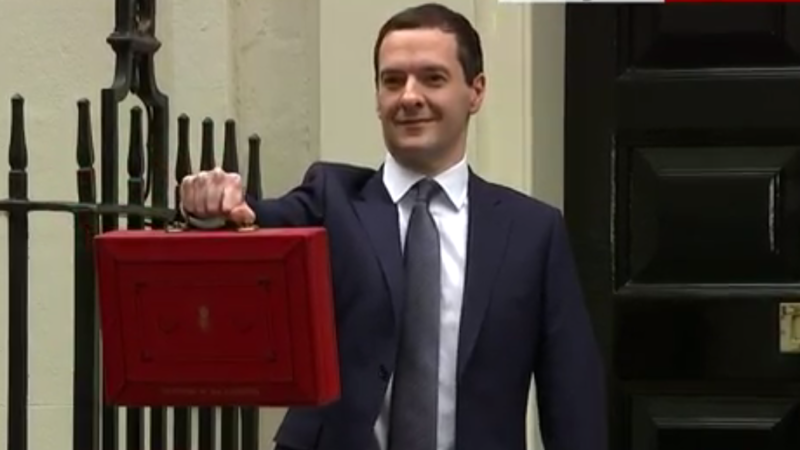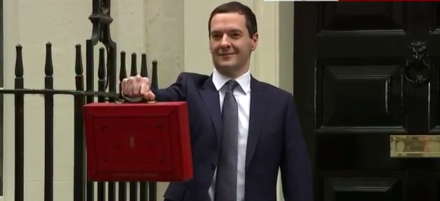

It would have been impossible to miss the furore last year regarding George Osborne’s proposed changes to tax credits arising from the Budget 2015.
The devastating human impact was clear, with constituents visiting my Salford office in their droves, desperate for answers and often teary eyed. They were not the so called ‘scroungers’ we hear about from some political and media circles. They were hard working people who simply wanted to do well in life, climb the so called ‘social ladder’ and provide a future for their children. Many worked as many hours as they could to make ends meet, often on insecure zero hours contracts that simply did not did not provide enough pay to live on, whilst others were forced to work part time because they had other caring commitments.
I was not alone in my outrage regarding these devastating proposals, MPs from all sides of the House of Commons expressed concern and following ferocious opposition and defeat in the House of Lords, the Chancellor eventually shelved the proposals amidst claims from his own spin doctors that he was now the ‘listening chancellor’.
But was he really listening…?
This Thursday, with very little fuss or fanfare, the Government will place a before a small committee of MP’s a set of regulations which will take up to £250 million pounds a year from 800,000 working families across Britain.
The Tax Credits (Income Thresholds and Determinations of Rates)(Amendment) Regulations 2016 will reduce what is known as the ‘income rise disregard’ from £5,000 to £2,500. This is ‘the buffer zone’ which protects families from incurring financial hardship as a result of repaying tax credits in the event that they may earn slightly more in any given year than previously anticipated.
To expect that a person would repay any tax credits paid if they do in fact earn more than anticipated is of course not unreasonable. However, the Government’s strategic approach to recover such sums is not as black and white, nor indeed as reasonable, as they would lead us to believe.
A household’s tax credit award for the year ahead is based on income from the previous financial year. At the end of that year HMRC ‘finalises’ the level of tax credit to reflect actual income during the course of the year. If income was higher than predicted, the government deems that an overpayment has been made – effectively a debt that must be paid back.
It will be automatically deducted from the claimant’s tax credit award for the next year, and if the ‘debt’ is greater than the award, the government will seek to recover it, often using private debt collectors.
Now, many families will see a change in income for various reasons over the course of a year. A member of the household may find a job or increase their working hours, exactly as the government encourages them to do.
To ensure that a rise in income is not immediately clawed back, leaving struggling people in sudden debt, there is some leeway in the system which allows income to rise by a small amount over the course of the previous financial year without incurring an overpayment. This leeway is known as the ‘income rise disregard’ and after halving it in 2011, the Government is now halving it again.
What is concerning is that the reduced figure appears to have been calculated on no real evidence base. Is it the average minimum salary increase of tax credit claimants assessed over previous years? Is it an amount that would provide an adequate cost of living buffer for those on the lowest salaries within the scheme?
Sadly not, this figure seems to have been simply plucked out of thin air leading many to believe that the cut is aimed quite squarely at those families that the government likes to champion as the “strivers” – families who are in low paid jobs and who take on more work to help pay the bills, or earn a promotion with a small pay rise.
The Government claim that the figure is simply a return to the figure used at the inception of the income disregard in 2003. Whilst this figure was deemed reasonable at the time it became immediately obvious to HMRC and the Treasury that this figure allowed too much sensitivity to small fluctuations in hours worked and as such was difficult for HMRC to manage efficiently. As a result HMRC ran up a backlog of over £2 billion pounds in over payments and the Paymaster General at the time stated that the current threshold was causing difficulties.
The then Labour Government therefore increased the threshold substantially and dramatically reduced the overpayments allowing for review and streamlining of the system until a more suitable figure could be determined. Since 2010, consecutive reductions have been made to the threshold resulting in a dramatic rise in overpayments leading many to believe that lessons quite simply have not been learned. In fact by 2013-14 where the threshold was at £5,000 the backlog was back up to £1.9 billion, almost at the level which caused a crisis in the system ten years ago.
It is quite clear therefore that collecting these overpayments uses a vast amount of administrative resources which is no doubt magnified by the fact that the Government is in the process closing down HMRC offices across the UK. The Government must learn from the lessons of the past and should ensure that the system can in fact cope with such reductions in the disregard.
Logistical issues aside however, the real issue here is that the figure proposed by Government is not realistic There is no one size fits all when it comes to assessing slight increases in pay as the situation may not be reflected in a families pay packet the following year causing many families to see a dramatic decrease in their income as a result. This will arguably add further pressures on households when the level of household debt in the UK is already spiralling.
There is real concern the cut will act as a disincentive to work extra hours especially for those families where additional hours are less stable – such as zero hours contracts, or where overtime may be offered from time to time. There is a stark choice, either work a few more hours from time to time and risk future repayments being imposed on the basis of a predicted salary or simply decline the offer of extra work and ensure stability in long term financial planning.
The impact on low paid workers is particularly stark when compared with the money spent Chancellor’s tax cuts for the wealthy.
For instance, those selling a stake in a business of up to £10 million now pay only 10% capital gains tax on their profits – a tax relief that is worth £3 billion a year, around three times the amount that was estimated and which dwarfs the savings made by the cut to tax credit. And the bulk of this money goes to a very different group of people – the latest analysis suggests that a full £1.8bn went to just three thousand individuals who enjoyed a multi-million pound bonanza from selling shares; an incredible £600,000 each.
George Osborne has made a deliberate choice to target those who are most vulnerable to financial instability and in need of support while protecting wealthy individuals and big business. This is neither pragmatic nor fair.
It is clear that as a result of this Tory Government’s policies there is no equivalent of the American Dream here in Britain. Many tax credit families will work hard, in desperate hope that they will climb the ladder of social success only to find that George Osborne has quite simply sawn off most of the rungs.
Rebecca Long-Bailey is MP for Salford and a Shadow Treasury minister




More from LabourList
‘Why COP30 mattered – and why Labour MPs needed to be there’
Streeting makes eve of budget intervention on child health, poverty and two-child limit
Workers to receive extra £900 a year from living wage increase